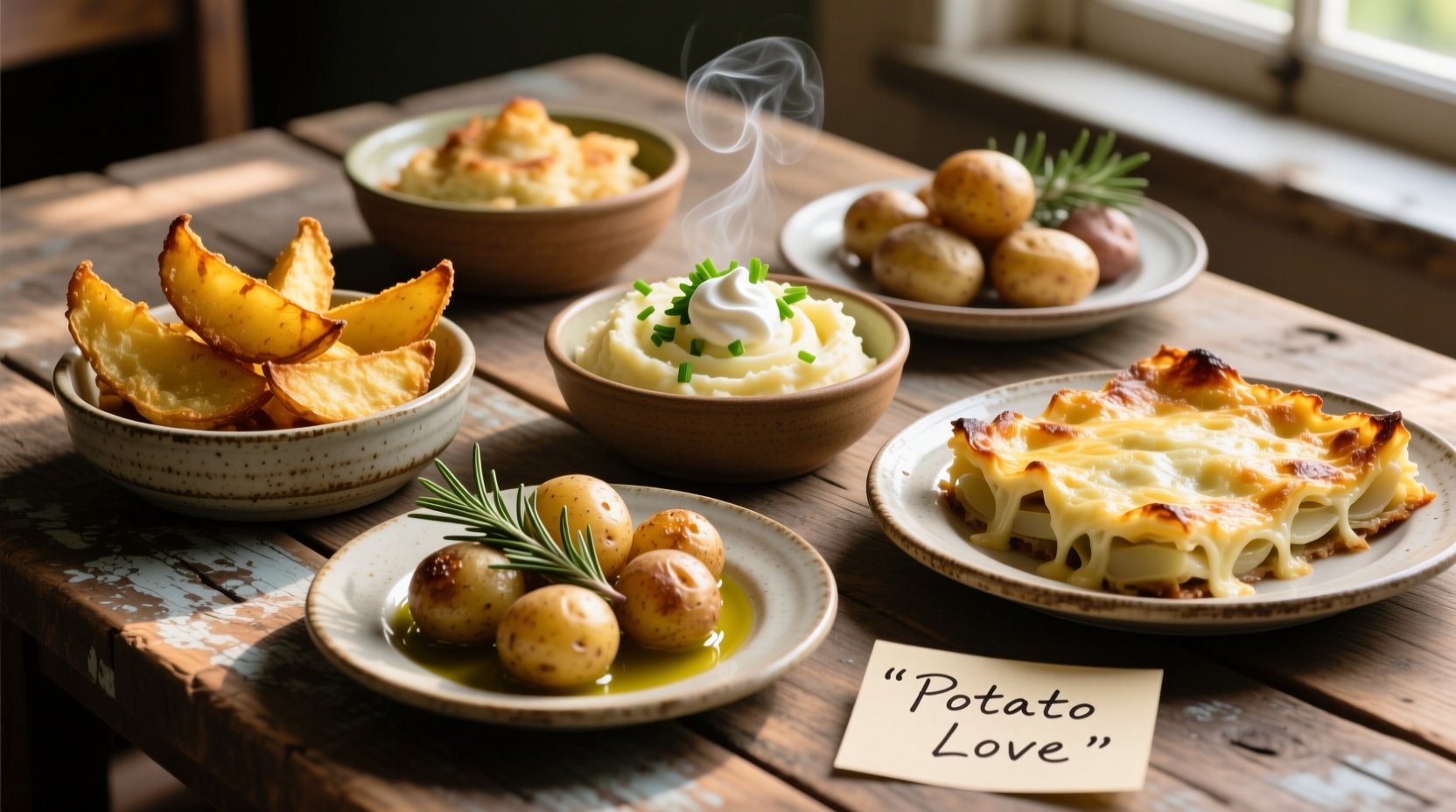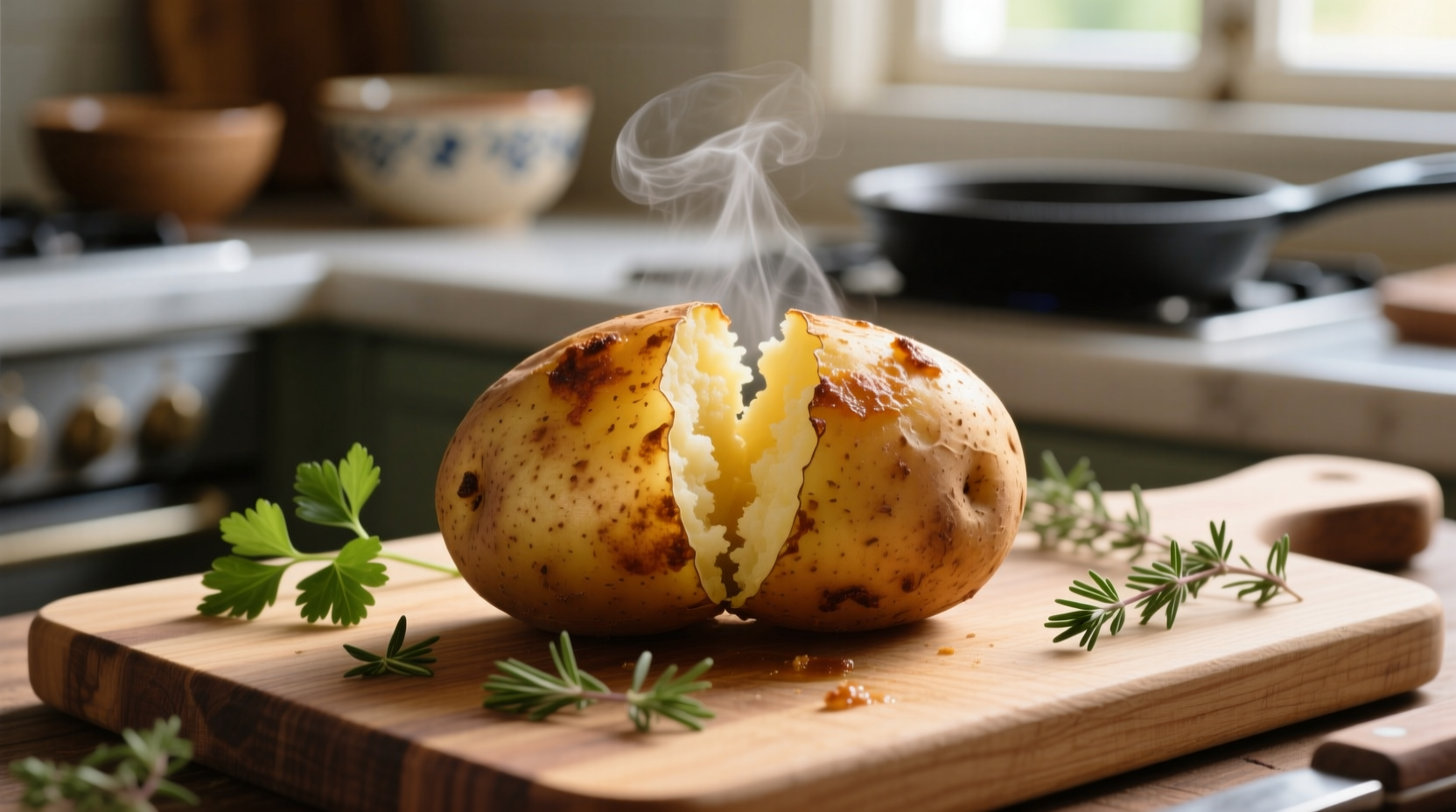Discover exactly how cooking methods affect potato nutrition, safety, and culinary potential. This guide delivers science-backed insights you can apply immediately whether meal prepping, reducing food waste, or elevating your cooking techniques.
How Cooking Transforms Potato Nutrition
Raw potatoes contain vitamin C, potassium, and resistant starch, but cooking significantly alters their nutritional profile. The method you choose determines which nutrients are preserved or enhanced:
| Cooking Method | Vitamin C Retention | Fiber Content | Glycemic Index | Resistant Starch |
|---|---|---|---|---|
| Boiled (with skin) | 70-80% | 2.1g per 100g | 73-82 | 3.5g |
| Baked | 50-60% | 2.4g per 100g | 85-95 | 2.8g |
| Steamed | 75-85% | 2.0g per 100g | 65-75 | 4.1g |
| Cooled boiled | 65-75% | 2.1g per 100g | 56-69 | 12.3g |
According to USDA FoodData Central, cooling cooked potatoes increases resistant starch by up to 300%, transforming them into a prebiotic powerhouse that supports gut health. This nutritional shift explains why potato salad often has a lower glycemic impact than hot mashed potatoes.
Optimal Cooking Methods Compared
Professional chefs select cooking techniques based on desired texture, flavor, and nutritional outcomes. Understanding the science behind each method helps you achieve perfect results:
Boiling Timeline & Technique
Boiling remains the most common preparation method, but timing affects both safety and nutrition:
- 0-5 minutes: Cold water start preserves structure
- 5-15 minutes: Starch gelatinization begins (critical for creamy texture)
- 15-20 minutes: Optimal doneness for most varieties (test with fork)
- 20+ minutes: Nutrient leaching accelerates into water
For maximum vitamin retention, use minimal water and keep skins intact. The FDA Food Code recommends cooking potatoes to 165°F (74°C) internal temperature to eliminate potential pathogens.
Steaming vs. Baking: The Texture Spectrum
Steaming preserves more water-soluble nutrients than boiling while creating a firmer texture ideal for salads. Baking concentrates flavors through Maillard reactions but reduces vitamin C content by nearly half. Roasting at high temperatures (400°F/204°C+) creates crispy exteriors while maintaining fluffy interiors - a technique perfected in Mediterranean cuisine.

Food Safety & Storage Guidelines You Need
Cooked potatoes present unique food safety considerations due to their low acidity and high moisture content:
Storage Timeframes by Method
Refrigeration slows but doesn't stop bacterial growth. The USDA Food Safety and Inspection Service specifies these maximum safe storage periods:
- Boiled potatoes (with skin): 4 days
- Baked potatoes: 3 days
- Mashed potatoes: 3-4 days
- Potato salad (mayo-based): 3 days
- Cooled boiled potatoes (for resistant starch): 5 days
Important context boundary: These timeframes assume immediate refrigeration within 2 hours of cooking (1 hour if ambient temperature exceeds 90°F/32°C). Potatoes left at room temperature longer enter the danger zone for Clostridium botulinum growth.
Safe Reheating Practices
When reheating cooked potatoes:
- Reach 165°F (74°C) internal temperature
- Stir frequently for even heating
- Add moisture to prevent drying
- Consume immediately after reheating
Culinary Applications by Cooking Method
Professional kitchens leverage specific cooking techniques to maximize potato potential:
Boiled Potatoes: The Versatile Foundation
Ideal for: Potato salads, soups, stews, and mashed preparations. Waxy varieties like Yukon Gold maintain structure better when boiled. Chefs often parboil potatoes before roasting to achieve perfect crispness.
Baked Potatoes: Flavor Concentration
Perfect for: Jacket potatoes, twice-baked preparations, and dishes requiring fluffy texture. Russet potatoes excel here due to their high starch content. Baking with skin on preserves nutrients and adds textural contrast.
Cooled Cooked Potatoes: The Gut Health Secret
Chilled cooked potatoes develop resistant starch that functions as prebiotic fiber. This preparation method transforms potatoes into a functional food supporting digestive health - a technique increasingly recommended by nutritionists.
Practical Potato Wisdom
Implement these evidence-based practices immediately:
- Steam instead of boiling when maximizing vitamin retention is your priority
- Cool cooked potatoes overnight to boost resistant starch content by 300%
- Store cooked potatoes in shallow containers for rapid cooling
- Add vinegar to potato salad to lower glycemic impact
- Reheat potatoes with a splash of liquid to maintain texture
Understanding these cooking science principles transforms how you prepare and utilize this versatile staple. Whether you're meal prepping for the week or crafting a special dish, these techniques ensure optimal nutrition, safety, and flavor from your cooked potatoes.











 浙公网安备
33010002000092号
浙公网安备
33010002000092号 浙B2-20120091-4
浙B2-20120091-4